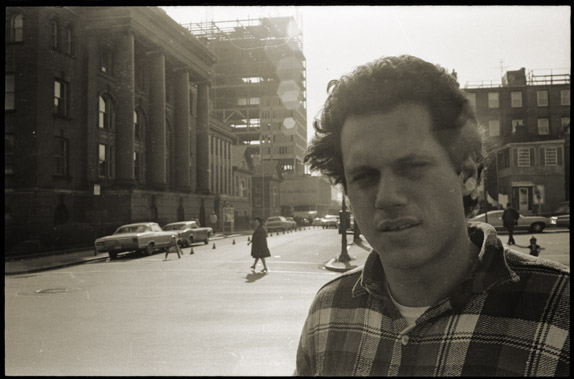Background on Eric Mann and Lian Hurst Mann

Eric Mann, 1969, photo by Jeff Albertson
Revolutionary organizers, writers, and theorists, Eric Mann and Lian Hurst Mann have been active in the struggle for civil rights for decades. The son of Jewish Socialist and labor organizers from New York, Mann came of age during the early phases of the Civil Rights movement and after graduating from Cornell (1964), he became field secretary for the Congress of Racial Equality. Increasingly radicalized through exposure to Black revolutionary nationalists, Mann took part in the Newark Community Union Project and became a leader in anti-imperialist opposition to the war in Vietnam as a New England regional coordinator for the Students for a Democratic Society (SDS) and later with Weatherman. Following a militant demonstration at the Harvard Center for International Affairs late in 1969, Mann was convicted of assault on the basis of perjured testimony and sentenced to two years in prison. An organizer even behind bars, he was moved frequently, and after being released early in July 1971 he continued his prison activism through the Red Prison Movement. At the same time, as a writer, he earned a national audience for Comrade George, his account of the life, politics, and assassination of Soledad Brother George Jackson.
Meanwhile, Lian Hurst was spending her adolescent years growing up in Los Angeles in the early 1960s as the daughter of a successful architect. During her own undergraduate architectural studies at the University of California at Berkeley, she met and married Peter Bailey, a fellow activist, though the marriage was short-lived. After graduating from Berkeley in 1969, Lian focused on her architectural work with a particular interest in women in architecture, and became heavily involved with feminist women's organizations. She was one of the founding members of the Berkeley/Oakland Women's Union (BOWU), a socialist feminist organization to carry on the struggle of the women's movement.
While feeling himself at a low point in his radical career, Eric Mann met Lian Hurst while vacationing in Mexico during the summer 1974. By 1975 the two married and Eric moved to the Berkeley area to join Lian. At her urging, the two took part in Marxist Leninist party building, joining the August Twenty-Ninth Movement (ATM), a recently-formed Chicano communist organization concerned with Marx's "National Question" as it related to Chicano people. They both decided to seek employment in manufacturing to become union organizers from the inside, first in various factories and shipyards in the San Francisco Bay area, and eventually with the United Auto Workers. During that time, the ATM merged with I Work Kuen, a Marxist revolutionary Asian organization to create the newly-formed League of Revolutionary Struggle (LRS). Their family grew with the birth of daughters in 1977 and 1980. In 1981, Eric and Lian were reassigned to Los Angeles to continue union organizing efforts at General Motors plants in the area where they led a campaign to keep the Van Nuys assembly plant open (1982-1992). With the move, Lian resumed professional architectural work and began work on her PhD.
In 1989, Eric founded the Labor/Community Strategy Center, focusing on building capacity for oppressed groups to work toward self-determination. By 1990, Lian completed her PhD and held various leadership roles in architectural professional organizations. Several years later, she took on primary responsibility for the National School for Strategic Organizing within the LCSC. The LCSC has been active in various efforts locally in Los Angeles to combat unfair public transportation practices, and to work toward climate justice and other civil rights. The LCSC has also developed important international partnerships both with the UN World Conference Against Racism in Durban, South Africa and the UN World Conference on Sustainable Development in Johannesburg. As of the receipt of this collection in 2007, their work continues, helping to build consciousness, leadership, and organization within communities of color. Both Manns continue to write and agitate in the cause of revolutionary change.
For a more detailed timeline of their work and lives compiled by Lian, see Box 12, Folder 17.

